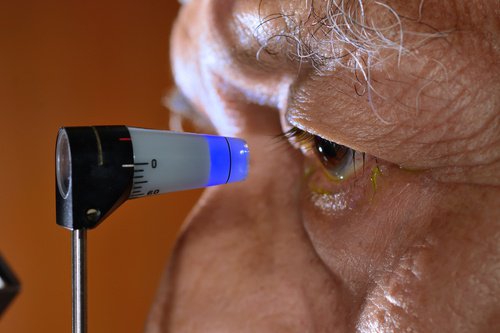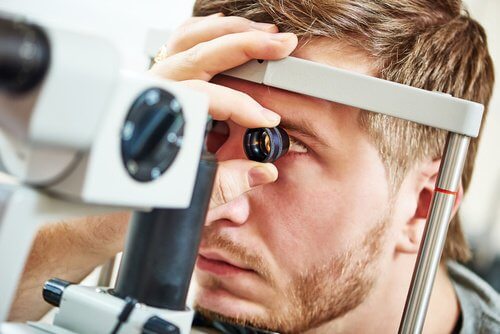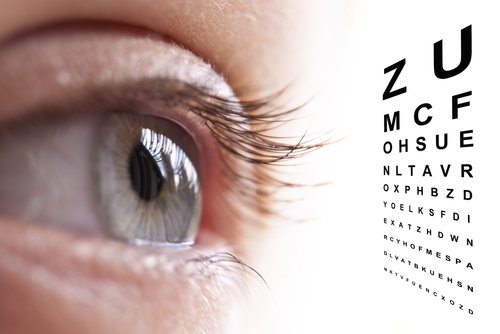Natural Ways to Prevent Glaucoma

The majority of patients don’t show symptoms in the first phases of glaucoma. However, with the passage of time, they will experience things like progressive vision loss. Since this is something very serious, this article will explain how to prevent glaucoma naturally.
What to know about glaucoma
Glaucoma is an ocular disease characterized by an elevation in eye pressure. This increased pressure reduces the fibers in the optic nerve and changes its appearance.
The number of people who suffer from this disease is very high (around 2% of the population over 40 years old) and it is one of the causes of irreversible vision loss.
There are two types of glaucoma:
Angle-closure glaucoma
This type diminishes the angle formed by the cornea and the base of the iris. It also quickly raises the intraocular pressure. The symptoms of this kind of glaucoma are dilated pupils, red eyes, seeing “halos” and intense pain.
Open angle glaucoma
The progression of this type of glaucoma is slow and affects vision little by little. Also, this is the more common type of the disease and the symptoms are not as evident.

Glaucoma can be congenital (appears between birth and three years of age), juvenile (hereditary in origin and appears after three years of age) or adult (appears after 40 years of age).
Moreoverm it can cause other diseases, such as cataracts, vitreous hemorrhages, and other traumas. The disease may also require surgery.
We also recommend:
Cataract Symptoms and Types to Know
To diagnose glaucoma, doctors use many techniques and tests. The objective is to determine the intraocular pressure and to see if the head of the optic nerve shows signs of excavation or not:
- Heidelberg Retina Tomograph (HRT)
- Pachymetry (measures the thickness of the cornea)
- High resolution sonogram (studies the structure of the eye)
- Gonioscopy (measures the angle between the iris and the cornea)
- Slit lamp and biomicroscope (magnifies the view of the optic nerve head)
- Applanation tonometry (measures the fluid pressure in the eye)
- Visual field test (tests peripheral vision)

The groups of people at risk of suffering from glaucoma are:
- People with African or Asian ascendancy
- Those over 60 years old
- Patients with chronic illnesses (above all diabetes, hypothyroidism, or hypertension)
- People with a family history of glaucoma
- Those with ocular lesions or myopia
- People who take corticosteriods
How can you naturally prevent glaucoma?
It’s important to live a healthy lifestyle. Of course, going to an optometrist once a year can be a good idea to prevent or diagnose the illness. However, it’s not enough. Take this advice into account as well:
Lower your levels of insulin
This recommendation is not only directed at diabetics. Everyone should avoid consuming excessive amounts of sugars and other foods that raise your blood sugar level, and consequently your insulin level.
To prevent the onset of glaucoma, it would be good to reduce the following foods to a minimum:
- pasta
- breads
- white rice
- refined cereals
- sweets
- potatoes
Also read:
Exercise regularly
Related to the previous advice, one of the best ways to reduce insulin and high blood pressure is to exercise.
Doing any kind of physical activity two or three times a week is vital to maintain good eye health and prevent glaucoma. And, you can choose any activity you want. But remember, it needs to be regular.

Eat lutein
This nutrient is a “vision strengthener”. It acts as an antioxidant and protects the cells from harm caused by free radicals.
Another compound that’s worth eating is zeaxanthin, because it has similar properties.
We find these contained in:
- Kale
- Spinach
- Broccoli
- Egg yokes
- Brussels sprouts
Avoid fats
Fats are present in much of the fast food we eat today. One of the many problems with trans fats is that they interfere with the absorption of omega 3 fatty acids. Omega 3 fatty acids are healthy and important for ocular health.
Therefore, eating too many fats contributes to macular degeneration. The foods that we should avoid are:
- Butter
- French fries
- Pastries
- Hamburgers
- Processed products
Eat berries
Red fruits, like blueberries and cranberries, are excellent natural remedies to take care of your vision. They can also prevent diseases like glaucoma or cataracts.
This is due to the flavonoids they contain, which also gives them their red color. The flavonoids also help to strengthen capillaries, muscles, and optic nerves.

That being said, we need to take into account that berries also contain sugar and can raise our insulin levels. Because of that, we recommend eating them in moderation, or no more than a handful a day.
Other interesting and useful advice that can help you to prevent or slow down the onset of glaucoma:
- Avoid activities that require a great strain on your eyes
- Always use sunglasses, even during winter and cloudy days
- Don’t drink alcohol in excess
- Don’t smoke
- Keep your caffeine intake to a minimum
- Eat a diet rich in vitamins A and C
- Sleep well every night
It’s also important to take care of your eyes. Avoid sitting in front of computer screens all day. Every hour, take a few minutes to rest or use graduated glasses prescribed by a professional.
This way, your vision will be less tired and with less possibility of having an ocular pressure increase.
All cited sources were thoroughly reviewed by our team to ensure their quality, reliability, currency, and validity. The bibliography of this article was considered reliable and of academic or scientific accuracy.
- Weaver, D. T. (2012). Glaucoma. In Pediatric Clinical Ophthalmology: A Color Handbook. https://doi.org/10.1201/b15762
- McMenemy, M. G. (2014). Primary open angle glaucoma. In Clinical Glaucoma Care: The Essentials. https://doi.org/10.1007/978-1-4614-4172-4_12
- Weinreb, R. N., Aung, T., & Medeiros, F. A. (2014). The pathophysiology and treatment of glaucoma: A review. JAMA – Journal of the American Medical Association. https://doi.org/10.1001/jama.2014.3192
- Bock, R., Meier, J., Nyúl, L. G., Hornegger, J., & Michelson, G. (2010). Glaucoma risk index: Automated glaucoma detection from color fundus images. Medical Image Analysis. https://doi.org/10.1016/j.media.2009.12.006
This text is provided for informational purposes only and does not replace consultation with a professional. If in doubt, consult your specialist.








